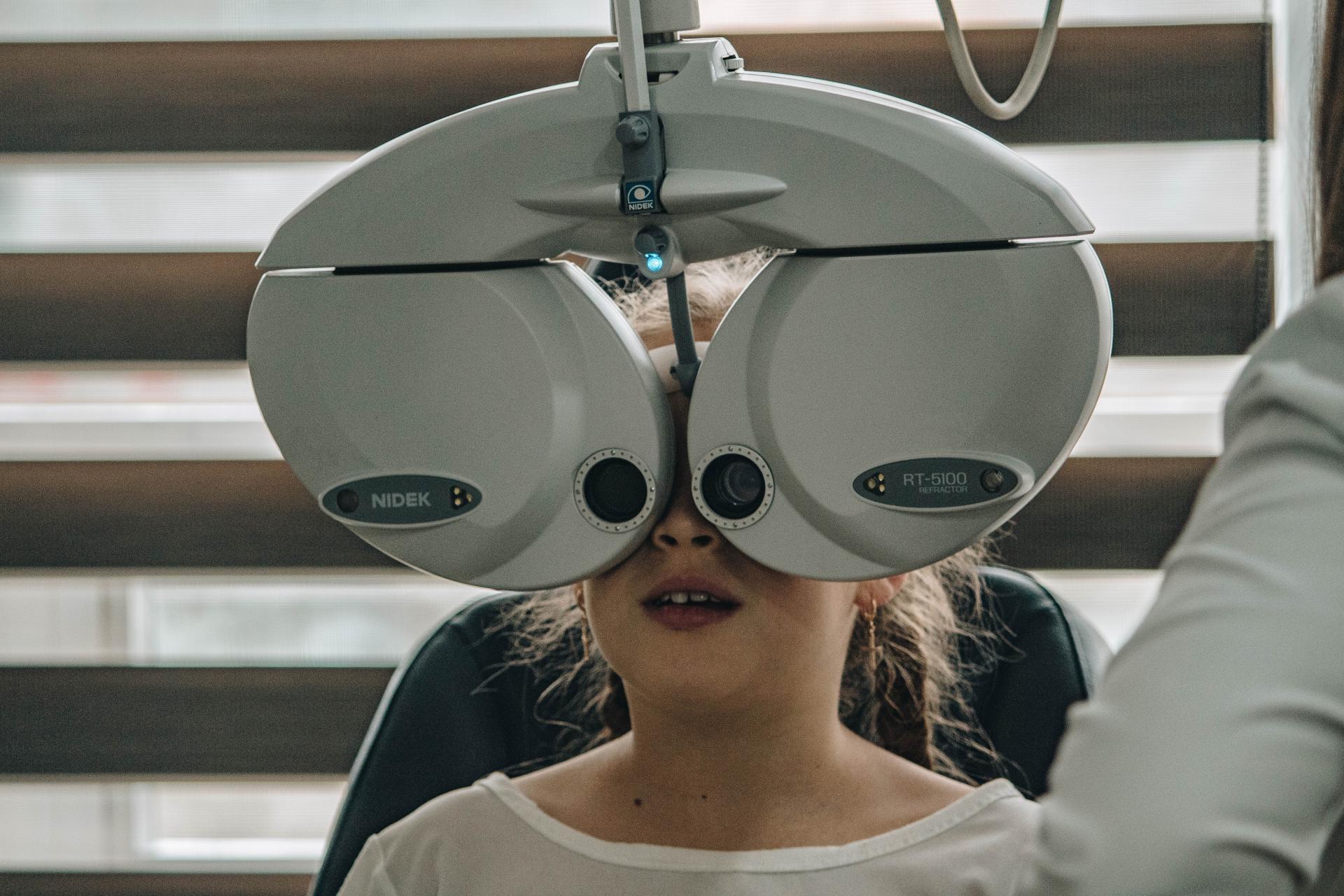Booking regular eye tests for your children is really important to ensure they are not suffering from any un-diagnosed vision problems. Although for most children it is rare to experience sight issues, for those that do, it can have a large impact upon their daily life. This is particularly noticeable at school where they may struggle to see the front of the classroom. During the pandemic it has been reported that over half of parents in the UK did not book an eye test for their child. Leaving many children going over a year without seeing an Optometrist or visiting their local Optician for a check-up. Despite the pandemic, eye tests are still key to ensuring eye health is cared for and monitored.
Children’s Eye Tests
As many children will experience vision problems without communicating these to their parents, it is not surprising that around 20% of school-aged children have an undiagnosed vision problem. By booking an annual eye test for your child, the risk of this can be dramatically reduced.
Although a child’s eye test is not considerably different to an adult’s eye test, there are some small differences.
As young children may struggle to quickly differentiate or read letters and words, Opticians often opt to use pictures and symbols during their eye tests instead. Asking a child to pick which symbol or picture they see most clearly. Opticians will also use tests to check a child’s eye reflexes, monitoring the movement of their eyes from left and right, up, and down. Often, they will do this by asking them to follow the movement of a physical object with their eyes.
Alongside these basic tests, a child’s eye test will also include a refraction test, to ensure they do not need a prescription for glasses or need a change to their prescription. Much like an adult’s eye test, the child will be asked to look through a selection of different lenses to analyse at which point their vision is most clear and when it is most blurry.
It is very important for parents to have the basic knowledge of any genetic history of eye diseases or vision problems as Opticians will use this information to assess the child’s eye health. Giving them an indication of some issues that they may need to look out for or monitor from appointment to appointment.
How Frequently Should a Child have their Eyes Tested?
Until the age of 8 years old, a child’s eyes are still growing and developing. Early detection of vision problems during these vital years will provide a greater chance of treating these. From birth it is very important that your child’s eyes are examined frequently by an Optometrist.
When your child is born their sight will be checked as early as 3 days old and then again at 6-8 weeks old. This to check that their eyes have been developing properly within the womb and that their eyes are reacting to light and motion. From here on, their eyes should be checked every 6 months – 1 year. By booking these eye examinations as frequently as your Optometrist recommends, they will be able to analyse the development of your child’s eyes over time. All whilst gaining a better indication of any developing sight issues. Early detection and monitoring of any vision problem will provide greater chance for treatment.
Looking after your children’s eyes
Between these appointments, you can help to promote healthy vision in your children by ensuring they spend plenty of time outdoors, helping their eyes to develop. Follow a balanced and healthy diet, incorporating foods which promote healthy eyes and clear vision, such as those high in Vitamin A. For those children who do need to wear eyeglasses, try to encourage them to wear these when necessary, helping them to adjust to these as quickly as possible.
Some signs to look out for in young children
For those parents concerned their child may be dealing with vision problems but are yet to communicate this with you, there are some tell-tale signs to look out for, including:
- Frequently rubbing their eyes
- Problems reading
- Complaining of headaches or tired and sore eyes
- Sitting too close to screens
- Their eyes do not point in the same direction

